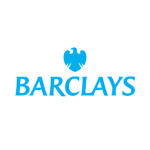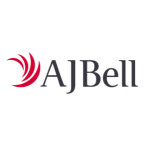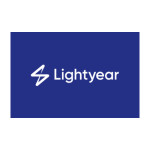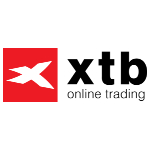How To Buy Barclays Shares
Buy Barclays [BARC] Shares in 2023
Discover the best ways to buy Barclays shares and maximize your investment. Follow our simple guide!
Investing in Barclays shares can be an exciting opportunity to diversify your portfolio and potentially generate income. However, navigating the world of share trading can be daunting for beginners. In this guide, we will provide a step-by-step approach to buy Barclays shares, understanding key metrics and ratios, and evaluating investment strategies. By the end, you will be equipped with the knowledge to make informed decisions and embark on your investment journey.
Top trading apps
-
Flat fee trading

- Join today & get £50 FREE trading credit
-
Great Prices

- Barclays Price Improver™
-
Award Winning

- Trade 24/7
-
Best for Global Trading

- £500 in trading commissions
The right share trading app or platform for you will depend on your requirements.
How to buy Barclays shares
Our view: The next generation of online trading platform means you can get setup & buy Barclays shares in as little as 5 minutes!
- Select a share platform - See our top platform picks
- Open your share account - To do this, you will need your bank details and national insurance number
- Fund your account - You will need to fund your a/c with a debit or credit card or bank transfer
- Search for the share using the Barclays stock code - Type in the BARC stock code into the search box
- Check out the latest info and price for the selected share - Some platforms offer free research and analysis
- Buy the share - Nice and easy!
More than 40,000 UK & international investment options
Get £100 worth of free trades when you open an ii trading account. Terms & fees apply. New customers only. Ends 5th April | Go to website » | |
| Trusted by over 430,000 people. FSCS protected. Capital at risk. | ||
Buy shares from over 24 international markets
| Go to website » | |
| Trusted by over 1.5 million people. FSCS protected. Capital at risk. | ||
Choice of 760 low cost ETF Funds
| Go to website » | |
| Build your own low cost portfolio using ETF managers such as Vanguard & JP Morgan. FSCS protected. Capital at risk. | ||
13,000+ shares & ETFs to trade
| Go to website » | |
| 313,000+ clients worldwide. FCA Regulated. Capital at risk. Spread bets and CFDs are complex instruments and come with a high risk of losing money rapidly due to leverage. 70% of retail investor accounts lose money when trading spread bets and CFDs with this provider. You should consider whether you understand how spread bets and CFDs work, and whether you can afford to take the high risk of losing your money. | ||
| Buy & trade in almost 5500 UK, EU and US stocks with low 0.35% currency conversion. Features: Say goodbye to high minimums and barriers to entry. Introducing the high interest vaults offer: - Interest rate: 4.61% on GBP (as of 12th March 2025) - Pricing: 0.25% total fees for all deposit sizes - Minimum amount: £1, €1, $1 - Maximum amount: No limit Capital at Risk | Go to website » | |
| Multi-currency investing, your money goes even further without the constant foreign exchange fees. Deposit, hold and invest in international stock markets in EUR, GBP and USD — all under one roof. Shares have a low, transparent execution cost. Investing in your local ETFs is completely free of Lightyear fee (other fees may apply). Earn interest on uninvested cash. Access live news feeds about the stocks you own, as well as professional analyst ratings & price targets. Lightyear is now live on web and has launched earnings calls audios. Capital at Risk. We, Fair Investment Company, will be paid a referral fee if you open an account and deposit funds through some of the links on this page. This includes financial promotion. | ||
| Invest in real stocks with 0% commission*. Over 6900 instruments Features: XTB is one of the largest stock exchange-listed FX brokers in the world with 1 million+ customers and over 20 years of activity in the financial markets. Capital at Risk Earn 4.5% interest rate on GBP uninvested funds | Go to website » | |
| World class trading platform: Easy to use, fully customisable, superior execution speeds, performance statistics. Applying for an account is quick and easy with a secure online form, and you could be trading within minutes. Wide range of instruments -forex, indices, commodities, shares and ETF’s. Multilingual customer support team is ready to help you - 24h hours a day from Monday to Friday. *For monthly turnover up to 100,000 EUR (then comm. 0.2%, min. 10 EUR). Capital at risk | ||
| Invest in over 6,100+ US, UK & EU stocks & ETFs commission-free Features: Start with £2 investment. Superb app design and transparent account charges. Great for beginners and experienced investors alike | Go to website » | |
| Mobile app - manage your portfolio on the move. FSCS protected. Capital at risk. | ||
| Access over 3,000 funds. UK & Overseas shares. Invest from £100 or £25 pm Features: Live share prices. Award winning services. | Go to website » | |
| Hargreaves Lansdown is the UK's No 1 platform for private investors trusted by over 1.6 million customers. Capital at risk. | ||
| Access to 70,000+ instruments, smart trading tools & market insights Investment platform for different needs and experience levels | Go to website » | |
| Saxo serve clients in 170 countries, hold 70+ bn GBP in assets under management & process 1m transactions daily. FCA regulated. Capital at risk. | ||
Trading news for Barclays
Is now a good time to Barclays shares
How to buy Barclays shares
Key Takeaways
- Open a trading account with Barclays to buy their shares, considering fees, features and user experience.
- Understand the share price, dividends, market value and sector performance of Barclays before investing.
- Consider risks involved in investing & future prospects for Barclays when making an informed decision.
Getting Started with Barclays Shares
To start investing in Barclays shares, you’ll need to:
- Grasp the basics of investing in shares and understand the risks involved.
- Set up a trading account with a reputable brokerage firm.
- Choose an appropriate platform for trading Barclays shares.
- Keep in mind that investing in shares, like Barclays Bank PLC, involves risk as the value of your investments can fluctuate, and you may receive less than you initially invested.
- Consider investing in funds instead of individual shares to diversify your portfolio. Funds allow you to invest in a range of shares, bonds, and other assets across global markets managed by experienced fund managers.
Before you start trading Barclays shares, you should first open a trading account. This process involves providing your personal information, identification, and bank details for verification purposes.
After the account is set up, you can start exploring various trading platforms to find the best fit based on fees, features, and user experience. Barclays offers platforms like Barclays Smart Investor and BARX, each with distinct fees and features. Consider your investment goals, trading frequency, and desired level of support when choosing the right platform.
Opening a Trading Account
The first step to trading Barclays shares is opening a trading account. This process requires:
- Providing personal details such as your name, address, and National Insurance number
- Verifying your identity using a passport or driving license
- Providing your bank account information
Once you have opened a trading account, your shares will be held on a nominee basis, meaning the investment service holds the shares electronically on your behalf. Any dividends paid by the company are typically credited to your retail investor accounts, making it a convenient and secure way to hold shares.
If you have paper share certificates, you can convert them into nominee-held shares. This can be done by lodging them into your investment account.
Choosing a Trading Platform
Choosing the appropriate trading platform is integral to your Barclays share trading experience. Each platform offers different fees, features, and user experiences tailored to various investment needs. For example, Barclays Smart Investor has a fixed fee of £12.95 per trade, while BARX has a fee structure that varies according to the size of the trade.
When evaluating a trading platform, consider the available features such as real-time market data, charting tools, and access to research and analysis. The user experience is also essential, so look for platforms with intuitive interfaces and convenient tools.
Assessing fees, features, and user experiences will help you discover the trading platform that aligns with your investment needs.
Understanding Barclays Shares
To fully comprehend Barclays shares, you should familiarize yourself with the following:
- Share price
- Dividends
- Market value
- Sector performance
A share represents a portion of a company’s worth listed on a stock exchange. Share value fluctuates based on demand and the investment value associated with the company.
When investing in Barclays shares, it’s crucial to have a long-term perspective, as fluctuations in value can occur, and past performance does not guarantee future results. If uncertain, seek independent financial advice.
Barclays, a British global bank, is a significant player in the banking sector. As an investor, understanding the factors that influence Barclay’s share price, dividends, and market value can help you make informed decisions.
In the next sections, we look at:
- Barclays share price
- Dividends
- Market value
- Sector performance
Barclays Share Price and Dividends
Barclays share price and dividends are influenced by factors such as demand, perceived investment value, and company performance.
The ticker symbol for Barclays shares is BARC, and the company has been listed on the London Stock Exchange since November 1953. The Barclays stock, represented by its share price, can be influenced by various factors such as technical advancements, financial crises, and international disputes.
Comprehending the Bid and Ask prices is vital when trading Barclays shares. Here are some key points to remember:
- The Bid price is the amount one must pay to purchase a share.
- The Ask price, also known as sell prices, is the price a seller is willing to accept for the purchase of shares.
- The Spread, which is the difference between the Bid and Ask prices, reflects the market’s liquidity and the degree to which the stock price has increased or decreased on the day.
Dividends are a portion of the profits distributed annually to shareholders. Barclays has a history of paying dividends to its shareholders, with the dividend yield being a measure of the income generated by an investment relative to its price.
The dividend yield is calculated by dividing the annual dividend per share by the prevailing share price. Understanding the dividend yield and payout history can help you make informed decisions about investing in Barclays shares.
Market Value and Sector Performance
Market value, also known as market capitalisation, and sector performance are crucial aspects of understanding Barclays shares. The market value of Barclays is estimated to be approximately £22.97 billion. Factors affecting the market value of Barclays include economic factors, industry trends, and global events.
The banking sector, which also deals with stamp duty reserve tax, has experienced a sustained rise in market value in recent years, indicating a positive outlook for the industry.
Investors should monitor industry trends and global economic developments that might impact Barclays shares’ market value and sector performance. By staying informed and monitoring the market, you can make better decisions about when to buy or sell shares.
How to Buy and Sell Barclays Shares
The process of buying and selling Barclays shares includes choosing a suitable platform, studying the company, and carrying out trades. To purchase Barclays shares, you need a smartphone or computer, an internet connection, your passport or driving license, and a form of payment.
Barclays offers various platforms, such as Barclays Smart Investor and BARX, each with distinct fees and features.
Before investing, it’s important you research the company thoroughly. Barclays provides a Research Centre with data and tools for analysis, as well as publishing their most popular shares on a weekly basis. By analyzing the company’s performance and market trends, you can make informed decisions about buying and selling shares.
Buying Barclays Shares
Before purchasing Barclays shares, check that your trading account has enough funds to handle the investment and the dealing charges. You can search for Barclays shares after logging into your account and selecting the desired amount of shares.
To place your order, follow the specific procedure for the platform you have chosen.
You should acquaint yourself with diverse types of orders when purchasing shares. Some common types of orders include:
- ‘Quote & Deal’ order: allows you to place your order immediately and ascertain the exact price before placing the order.
- ‘Limit orders’: Establish a maximum or minimum threshold you do not wish to exceed or fall below, respectively.
- ‘At Best’ orders: instruct the purchase or sale at the most advantageous price attainable in a timely manner.
Selling Barclays Shares
To sell Barclays shares, you need to follow these steps:
- Keep an eye on the share price.
- Determine the selling time.
- Place a sell order on your preferred platform.
- Submit an ‘Order’ through the trading platform.
- The price you receive will be dependent on when the order is completed.
Consider the following factors when deciding when to sell your Barclays shares:
- How much profit you would like to generate
- At what price you might sell the shares
- The optimal time to sell, as this can have a significant impact on the profits you realize
By carefully monitoring the share price and market trends, you can make informed decisions about when to sell your Barclays shares.
Barclays Investment Strategies
Barclays’ investment strategies include holding shares for a long-term with dividend reinvestment and trading spread bets and CFDs. Long-term holding with dividend reinvestment is a strategy of investing in a company for an extended period and reinvesting the dividends obtained from the company into the same. This approach permits investors to gain from the compounding effect of their investments.
On the other hand, trading spread bets and CFDs are:
- Leveraged financial instruments
- Enable investors to speculate on the price movements of a particular asset without actually possessing the asset
- Generally employed by traders aiming to secure short-term profits
Long-Term Holding and Dividend Reinvestment
Holding shares for an extended period and reinvesting dividends to boost returns constitute the strategy of long-term holding and dividend reinvestment. This strategy allows investors to benefit from:
- The compounding effect of their investments
- Reinvested dividends can be used to acquire additional shares of the stock at a reduced cost
- Potentially increasing the total value of the portfolio over time.
Optimal long-term holding strategies for Barclays include:
- Embracing a buy-and-hold approach
- Diversifying one’s portfolio
- Rebalancing periodically
- Remaining invested throughout market cycles
By following these strategies, investors can maximize their potential returns and minimize risks associated with market fluctuations by maintaining a diversified portfolio.
Trading Spread Bets and CFDs
Investors can speculate on price movements and possibly earn from both rising and falling prices by trading spread bets and CFDs. These leveraged financial instruments enable investors to gain exposure to the full value of a trade by depositing a fraction of the required amount, known as margin.
There are multiple trading spread bet strategies for Barclays, including:
- Analyzing the charts to comprehend volatility
- Utilizing daily updates and broker suggestions
- Exploiting derivatives such as spread bets or contracts for difference (CFDs)
It is recommended to investigate and become familiar with different strategies to identify the one that is compatible with your trading style and objectives.
Evaluating Barclays Shares: Key Metrics and Ratios
To assess Barclays shares, you need to scrutinize key metrics and ratios like the Price-to-Earnings (P/E) ratio, dividend yield, and Return on Equity (ROE). These ratios can provide valuable insights into the company’s profitability, valuation, and income generation relative to its share price.
The P/E ratio is a financial ratio employed to compare a company’s current share price to its per-share earnings. A high P/E ratio suggests that investors are willing to pay a higher price per dollar of earnings, while a low P/E ratio indicates that investors are not as willing to pay as much for each dollar of earnings.
The dividend yield is a measure of the income generated by an investment in relation to its price. Return on Equity (ROE) is a measure of the profitability of a company in relation to its total equity.
Price-to-Earnings (P/E) Ratio
The Price-to-Earnings (P/E) ratio is a useful tool for assessing share profitability and valuation in comparison to competitors. It is determined by dividing the current share price by the company’s earnings per share (EPS). A higher P/E ratio implies that investors are prepared to pay a higher price per dollar of earnings, while a lower P/E ratio suggests that investors are not as willing to pay as much for each dollar of earnings.
The Price-to-Earnings (P/E) ratio of Barclays is 4.3x for the latest twelve months, as per the latest figures. A low P/E ratio implies that Barclays shares are overpriced. Conversely, a high P/E ratio may indicate that they are underpriced.
Dividend Yield
Dividend yield is a measure of the income generated by an investment relative to its price. It is determined by dividing the annual dividend per share by the prevailing share price.
The dividend yield can provide valuable insights into the income potential of an investment, allowing investors to compare dividend income with other income-generating investments.
The dividend yield of Barclays in 2023 is 5.23%. This figure can help investors assess the income potential of their investment in Barclays shares and compare it with other dividend-paying stocks or income-generating investments.
| Year | Dividend Yield (%) |
|---|---|
| 2014 | 2.67% |
| 2015 | 2.97% |
| 2016 | 2.01% |
| 2017 | 1.48% |
| 2018 | 2.99% |
| 2019 | 3.90% |
| 2020 | None |
| 2021 | 1.60% |
| 2022 | 3.94% |
| 2023 | 5.23% |
Return on Equity (ROE)
Return on Equity (ROE) is a measure of the profitability of a company in relation to its total equity. It is calculated by dividing the company’s net income by its total equity. ROE can provide insights into how effectively a company is utilizing its assets to generate profits, with a high ROE indicating efficient use of resources.
A low ROE may suggest that a company is overvalued, as it is not yielding sufficient profit from its assets. On the other hand, a high ROE could indicate that the company is undervalued and its assets are generating significant profits.
Barclays Shares: Risks and Future Prospects
Grasping the risks and future prospects of Barclays shares is key to making knowledgeable investment decisions. Potential risks associated with investing in Barclays shares include market volatility, liquidity risk, and counterparty risk. It’s crucial to be aware of these risks and take them into account when deciding to invest in Barclays shares.
The future prospects for Barclays and the banking sector depend on factors such as technological advancements, regulatory changes, and global economic trends. With the rise in demand for digital banking services and an emphasis on sustainability, the banking sector’s outlook appears optimistic, potentially benefiting Barclays shares in the long run.
Risks Involved in Investing in Barclays Shares
Investing in Barclays shares comes with potential risks like:
- Market volatility, including fluctuations in stock market prices, currency exchange rates, and interest rates
- Economic aspects, such as changes in the overall economy
- Issues specific to the company, such as changes in management, financial performance, or competitive position
It’s essential to be aware of these risks and take them into account when deciding to invest in Barclays shares.
In addition to market and company-specific risks, capital risk is another factor to consider when investing in Barclays shares. Capital risk refers to the potential losses that may occur as a result of changes to the capital structure of a company, including modifications to its debt or equity holdings. Understanding these risks and considering them when deciding to invest in Barclays shares will allow you to make well-informed investment decisions.
Future Prospects for Barclays and the Banking Sector
Several factors, such as upcoming technologies, customer needs and expectations, and worldwide economic growth, shape the future of Barclays and the banking sector. As the demand for digital banking services continues to grow, Barclays has an opportunity to capitalize on this trend by enhancing its digital offerings and providing more convenient banking solutions for its customers.
In addition to technological advancements, the banking sector’s future prospects are also affected by regulatory changes and global economic trends. By staying informed about these factors and adapting to the changing market landscape, Barclays can continue to grow and maintain its position as a leading player in the banking sector.
Summary
In conclusion, investing in Barclays shares offers potential for growth and income generation, but it also comes with its share of risks. By understanding the basics of buying and selling shares, evaluating key metrics and ratios, and considering various investment strategies, you can make informed decisions about your investment journey. As the banking sector continues to evolve with technological advancements and changing customer expectations, staying informed and adapting to these trends can help you reap the rewards of your investment in Barclays shares.
Frequently Asked Questions
How do I buy shares in Barclays?
You can buy or sell Barclays (BARC) shares through a Stocks and Shares ISA, Lifetime ISA, SIPP or Fund and Share Account on the London Stock Exchange (LSE: BARC) or the New York Stock Exchange (NYSE: BARC). If you hold shares in Barclays Sharestore, you can only buy or sell them through Equiniti Group’s Share Dealing Service, either online, by telephone or by post.
Is Barclays good to invest in?
Overall, Barclays appears to be a great option for investors, with low fees for trading stocks, funds and bonds, as well as no inactivity or withdrawal fees. With its solid background, long history, and top-tier regulation, it’s certainly worth investing in.
How can I open a trading account for Barclays shares?
To open a trading account for Barclays shares, you must provide the necessary personal and financial information for verification.
What factors influence the Barclays share price?
The Barclays share price is affected by technical advances, financial crises, and international disputes. These factors can have a significant impact on the stock’s performance. For example, a new technology breakthrough could lead to a surge in the share price, while a financial crisis could
What are the key metrics and ratios used to evaluate Barclays shares?
Key metrics and ratios used to evaluate Barclays shares are the P/E ratio, dividend yield, and ROE, providing investors with an indication of the company’s financial performance and potential future returns. These metrics can be used to compare Barclays to its peers and the wider market, helping investors to make informed decisions about their investments.
About Barclays
Barclays PLC provides various financial services in the United Kingdom, Europe, the Americas, Africa, the Middle East, and Asia. The company operates through Barclays UK; Barclays UK Corporate Bank; Barclays Private Bank and Wealth Management; Barclays Investment Bank; and Barclays US Consumer Bank segments. It offers financial services, such as retail banking, credit cards, wholesale banking, investment banking, wealth management, and investment management services, as well as lending products. In addition, the company engages in securities dealing activities and issuing of credit cards. The company was formerly known as Barclays Bank public limited company and changed its name to Barclays PLC in January 1985. Barclays PLC was founded in 1690 and is headquartered in London, the United Kingdom.









